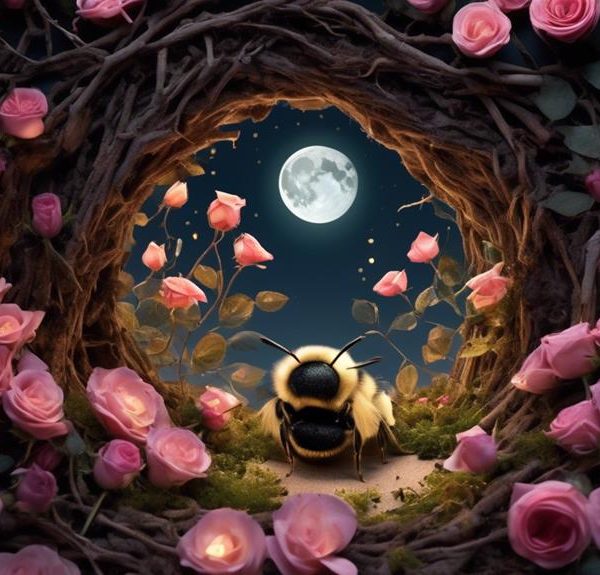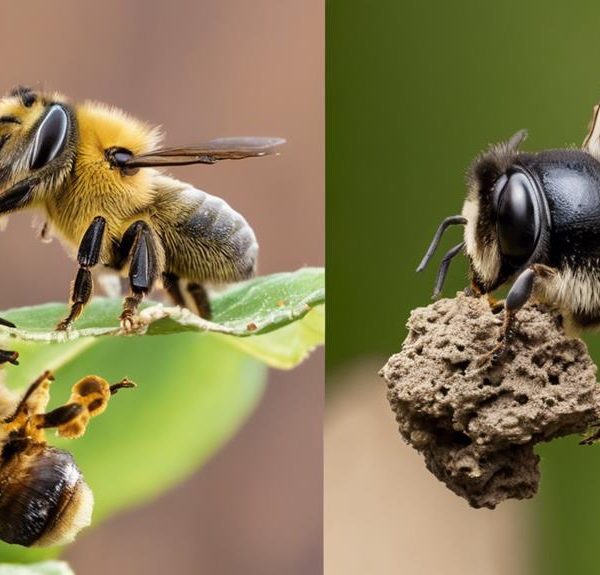Witness the fascinating world of Illinois' leaf cutter bees and uncover their critical role in our ecosystem.
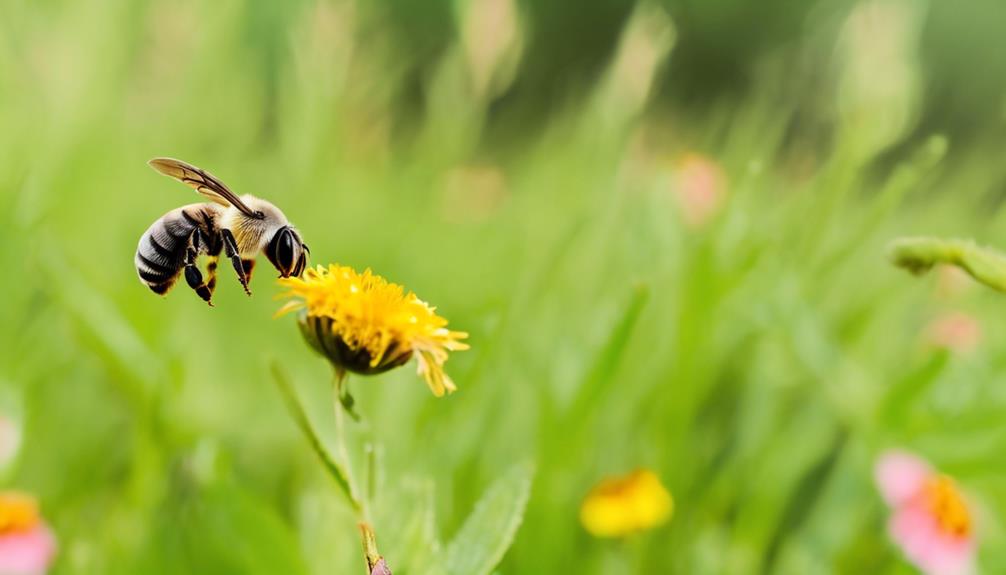
Leaf Cutter Bees Illinois
Imagine you're sitting in your backyard in Illinois, sipping on your morning coffee, and you notice peculiar, almost perfect, circular cuts out from the leaves of your favorite rose bush.
Don't be too quick to blame the neighborhood kids or pesky rodents, you're likely witnessing the handiwork of leaf cutter bees.
These industrious insects, often mistaken for common houseflies, play an important yet largely unrecognized role in our ecosystem.
You might wonder, 'why should I care about these tiny creatures?'
Well, let's explore together the intriguing world of leaf cutter bees and their significance, particularly in the Illinois environment, and you might find yourself surprisingly captivated.
Key Takeaways
- Leaf cutter bees are solitary creatures that construct nests in soft, rotting wood or thick plant stems.
- They play a vital role in pollination in Illinois and are more efficient pollinators than honeybees in certain circumstances.
- Leaf cutter bees aid in plant pruning, promoting plant health and growth.
- Creating a bee-friendly habitat and providing suitable nesting sites can help attract and protect leaf cutter bees.
Understanding Leaf Cutter Bees
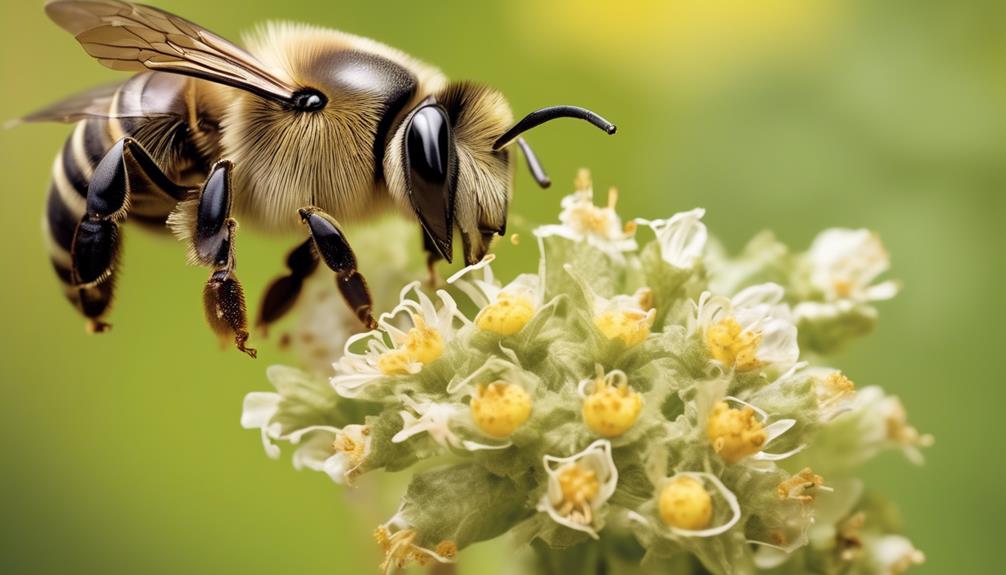
To fully grasp the unique characteristics of leaf cutter bees, you need to dive into their intriguing life cycle, behavioral patterns, and the crucial role they play in the ecosystem.
Unlike honeybees, leaf cutter bees are solitary creatures. The females construct nests in soft, rotting wood or thick plant stems where they deposit their eggs. You'll see them cutting neat, circular sections from leaves, but don't fret, they're not harming the plants. They're using these pieces to build protective cells for their offspring.
Their life cycle consists of four stages: egg, larva, pupa, and adult, much like other insects. But here's what sets them apart: leaf cutter bees are excellent pollinators. They carry pollen on their abdomen where it easily brushes off onto flowers, promoting cross-pollination. They're not after your picnic; they're working hard to keep our ecosystem thriving.
And while it might be unnerving to find them buzzing around your garden, remember they're docile and rarely sting. They're more interested in your plants than you. So next time you spot a leaf cutter bee, consider it a sign of a healthy garden. You're playing host to one of nature's most efficient pollinators.
Identification and Habits
Now that you're familiar with the life cycle and ecological role of leaf cutter bees, let's identify these industrious insects and explore their daily habits.
Leaf cutter bees, or Megachilidae, are small to medium-sized bees, typically measuring between 0.2 to 0.6 inches in length. They're characterized by their dark bodies, often with bands of white hair across the abdomen. Their most distinguishing feature, however, is their mandibles which they use to cut leaves for their nests.
One of their unique habits involves meticulously cutting out semi-circular or oval sections from leaves, which they then carry back to their nests. This industrious behavior is not only fascinating but also serves a crucial role in pollination.
To help you better understand, let's take a look at this table:
Characteristics | Behavior | Importance |
|---|---|---|
:- | :- | :- |
Small to medium-sized, dark bodies with white hair bands | Cut out leaf sections for nests | Crucial role in pollination |
Mandibles for cutting leaves | Work diligently, carrying leaf sections back to nests | Assist in plant reproduction |
Active during the day, preferring warm, sunny conditions | Often mistaken for wasps | Vital in maintaining biodiversity |
These habits and characteristics make leaf cutter bees an integral part of our ecosystem.
Role in Illinois Ecosystem
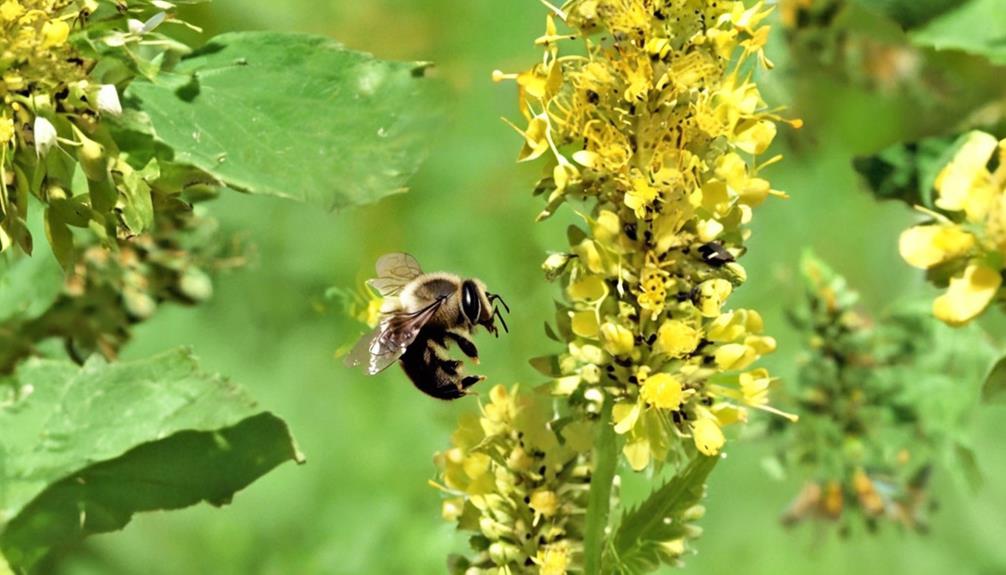
In the diverse ecosystem of Illinois, leaf cutter bees play a vital role in the pollination of both wild plants and cultivated crops. These diligent insects are excellent pollinators, even more efficient than honeybees in certain circumstances. Their unique method of carrying pollen on their abdomen, rather than on their legs like most bee species, contributes to their proficiency.
As you observe these bees in action, you'll notice they cut out small pieces of leaf material. Don't be alarmed. This isn't a sign of plant damage, but rather a part of their nesting process. They use these leaf pieces to construct nests for their offspring, providing a safe and secure environment for the next generation.
The contribution of leaf cutter bees to the Illinois ecosystem extends beyond pollination, though. Their leaf-cutting activities aid in plant pruning, promoting plant health and growth. Moreover, these bees, being solitary, don't pose the same threat of stinging as social species, making them a beneficial presence in residential areas.
Understanding and appreciating the role of leaf cutter bees in Illinois helps you grasp the complexity and interconnectedness of our ecosystem. These tiny insects are truly unsung heroes of our natural world.
Attracting Leaf Cutter Bees
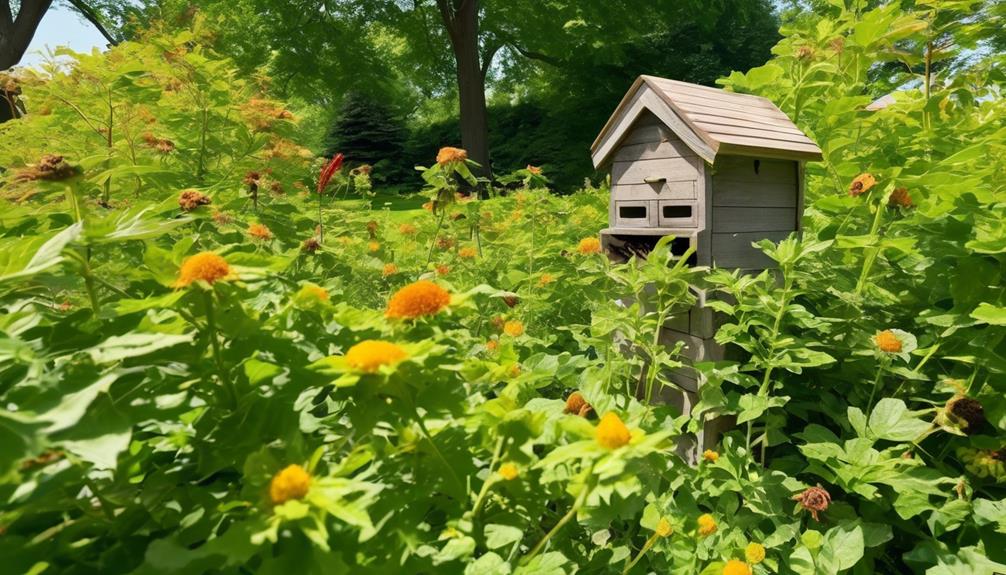
While appreciating the ecological role leaf cutter bees play in Illinois, you might be interested in encouraging these beneficial insects to your own backyard. There are specific strategies that you can employ to attract these diligent pollinators.
Firstly, it's crucial to create a hospitable environment for these bees. They need a habitat that provides abundant flowering plants and suitable nesting sites.
Plants Preferred | Nesting Material | Nesting Sites |
|---|---|---|
Alfalfa | Leaves | Wood Crevices |
Clover | Herbaceous stems | Soil |
Fruit Trees | Pithy plant stems | Hollow stems |
You'll also need to limit pesticide use as these can harm leaf cutter bees. Instead, opt for organic pest control methods.
Secondly, consider installing bee houses. These structures mimic the natural nesting sites of leaf cutter bees and can be a welcome addition to your garden.
Protecting Your Leaf Cutter Bees
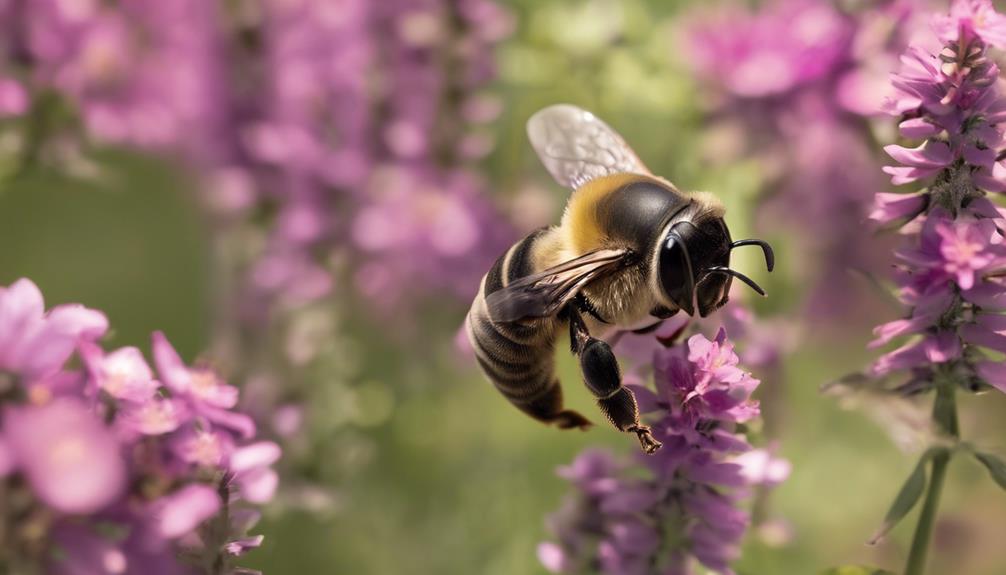
Once you've attracted leaf cutter bees to your garden, it's vital to safeguard their habitat to ensure their survival and continued pollination work. These bees are non-aggressive, solitary, and contribute significantly to the pollination of plants. They're not interested in human food or drinks, making them ideal urban garden pollinators.
To protect leaf cutter bees in your garden, consider creating a bee-friendly habitat. This includes providing a bee house or nesting site. You can purchase a ready-made one or craft your own using untreated wood and non-toxic materials. The tubes should be around 6-8mm in diameter to accommodate the bees.
Next, steer clear of pesticides and insecticides. These chemicals can harm or kill the bees, disrupting their pollination efforts. If pests become an issue, opt for organic or natural pest control methods.
Lastly, provide a variety of native plants for the bees to forage. They prefer a diverse food source, so a blend of flowering plants can ensure they've access to nectar and pollen throughout the season.
Protecting your leaf cutter bees isn't just beneficial for your garden, but it's an essential part of supporting our ecosystem's biodiversity.
Conclusion
So, you've learned about Illinois' leaf cutter bees. These industrious insects play a pivotal role in our ecosystem, pollinating plants while carving out leafy nests.
Attracting them is a matter of creating a suitable habitat, and their protection requires knowledge and careful stewardship.
Remember, while their leaf-cutting may seem destructive, it's a crucial part of nature's cycle.
So, embrace these diligent workers and their contribution to Illinois' biodiversity.

